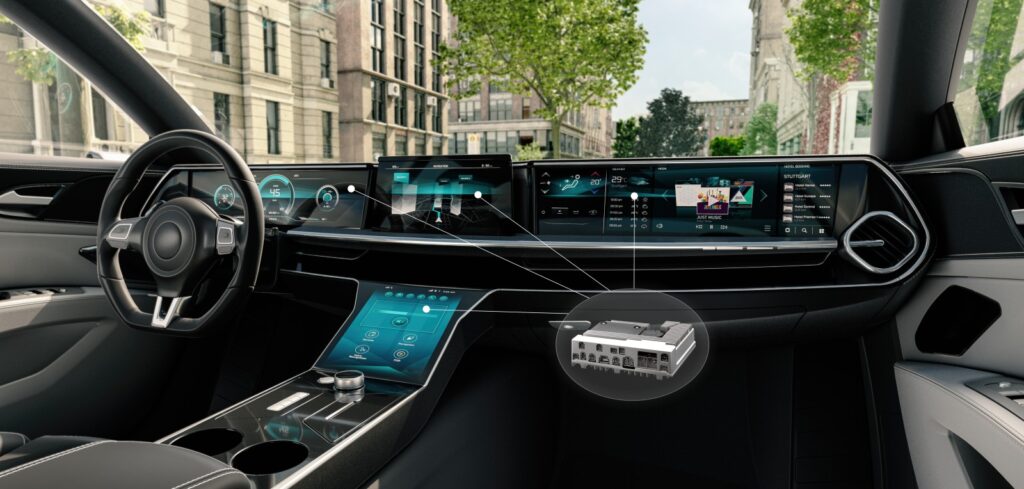In-vehicle displays, voice assistants, infotainment systems and advanced human-machine interfaces (HMIs) are becoming more prominent and sophisticated, and more processing power is required to manage and control complex in-vehicle systems.
To address this, Bosch has developed a high-performance infotainment domain computing system, tailored toward bringing in-car communication, in-car payment, video streaming, voice assistants and more to vehicles quickly. Bosch says that the Information domain computer delivers support for multiple in-vehicle systems within a single solution, and provides vehicle manufacturers with a cost-effective, flexible, scalable and powerful control unit for the future of in-vehicle technology.
“With the Information domain computer, Bosch is providing connectivity and computing power to the modern world of mobility,” said Stefan Buerkle, senior vice president and head of Connected Information Solutions, Bosch in North America. “Bosch has experience working together with a network of leading technology companies, and has developed a powerful and flexible integration platform to support and enable the rapid evolution of in-vehicle features.”
The system combines Bosch’s capabilities in automotive software solutions and domain-specific hardware with solutions from a network of technology companies in the hardware, component, software and services sectors. The result, it says, is a scalable platform that offers vehicle manufacturers the opportunity to utilize a combination of pre-integrated applications, the flexibility to support additional features developed in-house and the ability to accelerate time-to-market while managing cost efficiency.
The pre-integrated solution features technology from several collaborating organizations. It is built on the Blackberry QNX Neutrino Realtime Operating System (RTOS) and QNX Hypervisor, and designed to deliver reliable functionality to address the requirements of system designs. By combining a pre-integrated control unit with a customizable modular approach, Bosch says the platform offers the flexibility to tailor in-vehicle features to customer preferences and market segments.
The computer is powered by a 3rd generation Snapdragon Automotive Cockpit Platform from Qualcomm Technologies. In addition to supporting higher levels of compute and intelligence needed for advanced capabilities featured in next generation vehicles, the Snapdragon platforms are engineered to deliver rich visual and audio experiences, as well as intuitive artificial intelligent experiences for in-vehicle assistance in addition to contextual safety and support for precise positioning for enhanced navigation. Meanwhile, the enhanced display experience is facilitated by Texas Instruments’ FPD-Link SerDes technology for display and camera communications, which is supported by Molex solutions.
Further options available on the Bosch platform include voice assistants through Amazon Alexa and Cerence; in-vehicle streaming with Access Twine4Car; and navigation experience via TomTom Navigation for Automotive embedded and cloud-based navigation. It will also support the BlackBerry IVY Intelligent Vehicle Data Platform co-developed by BlackBerry and Amazon Web Services (AWS) to enable development of new applications and use cases.
The user experience for the pre-integrated solution is tied together by Rightware’s Kanzi HMI toolchain for signature UI creation, in collaboration with software integration expert Wipro.



